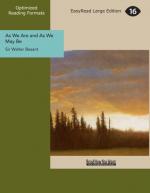I have considered, so far, some of the great houses standing in or along this historic street. Let us now note a few of the churches.
All Hallows, Barking, the first walking from the east, commemorates in its name the fact that it formerly belonged to the great convent of Barking in Essex, the gateway of which still stands at the entrance to the churchyard. This church escaped the Fire. Here was buried the poet Surrey, Bishop Fisher, and Archbishop Laud.
In the church of St. Magnus, London Bridge, the remains of Miles Coverdale, the translator of the Bible, rest: they were removed here from the Church of St. Bartholomew when it was pulled down to make more room for the Bank of England. This church has perhaps the finest tower, lantern, and steeple of all the City churches, in front is a small court planted with trees, whose foliage is strangely refreshing in early summer down in this dark place almost below the approach to the bridge. The church itself is fine but not very interesting. I have sometimes counted as many as ten present at the Sunday morning service.
St. Michael’s, Tower Royal, is Whittington’s church. In this parish he lived, though a house was long shown as his in Hart Street; here he died; in this church he was buried—behind this church stood his College of the Holy Spirit with its bedesmen and its ecclesiastical staff. If we pass the church and look in at the gateway on the north, we shall notice unmistakable signs of an ancient collegiate foundation in the disposition of the modern houses. Here is now the Mercers’ School. In the church there is no adequate monument to the memory of London’s greatest merchant—the man who did so much for the City which made him so rich, who royally entertained the King and Queen in his own house, and at the close of the banquet burned before their eyes the royal bond for L60,000, worth in modern money at least L600,000. I never think of Whittington without remembering a certain verse in the Book of Proverbs, ’Blessed is he who is diligent in his business, for he shall stand before Kings.’




